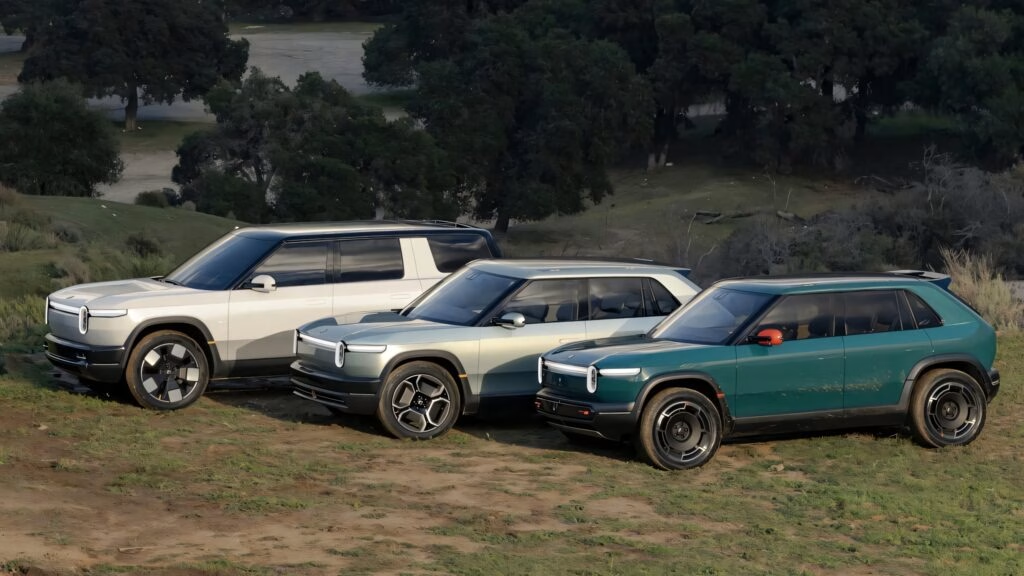What’s Behind Rivian’s Push for Rear-Wheel Steering and Steer-by-Wire?
Rivian’s recent job listing has quietly dropped a hint that’s got the EV world buzzing: the company is actively developing rear-wheel steering and a steer-by-wire system for its next generation of vehicles. If you’re wondering why that matters, let’s break it down. Rear-wheel steering can dramatically shrink the turning circle of big trucks and SUVs, making parking and tight maneuvers way less stressful. Steer-by-wire, meanwhile, ditches the traditional mechanical link between the steering wheel and the wheels, replacing it with electronic controls. The upshot? More precise handling, customizable steering feel, and the ability to adapt steering response based on speed or driving conditions.
How Will These Features Change the Way Rivian EVs Drive?
Imagine threading a full-size pickup through a crowded parking lot or navigating a twisty trail with the agility of a much smaller car. That’s the promise of rear-wheel steering. We’ve already seen this tech in action with the Tesla Cybertruck and luxury models from brands like Lexus and Mercedes-Benz. In real-world testing, rear-wheel steering can reduce a vehicle’s turning radius by up to 10 feet, according to data from SAE International. For Rivian’s R1T and R1S—both known for their off-road chops and generous proportions—this could be a game-changer.
Steer-by-wire takes things a step further. By removing the physical connection, engineers can fine-tune the steering ratio on the fly. At low speeds, the wheels can turn more sharply for easier parking; at highway speeds, the system can dial in more stability. Lexus’s One Motion Grip system, for example, adjusts steering input based on speed and driving mode, and early reviews have praised its responsiveness and safety redundancies. For Rivian, adopting similar technology could mean safer, more adaptable vehicles—especially as advanced driver-assistance systems (ADAS) become standard fare.
Are Current Rivian Owners Missing Out?
If you’re already driving an R1T or R1S, you might be feeling a twinge of FOMO. But here’s the reality: these updates are still in the early stages. The current models were refreshed just last year, so it’s unlikely they’ll see another major hardware overhaul anytime soon. Instead, the new tech is more likely to debut on Rivian’s upcoming R2 and R3 models, which are expected to target a broader market with smaller, more affordable EVs.
That said, Rivian’s track record suggests they’re committed to supporting existing owners. Over-the-air software updates have already brought new features and improvements to current vehicles. While hardware like rear-wheel steering can’t be retrofitted with a download, it’s a safe bet that Rivian will continue to roll out incremental improvements to its entire lineup.
How Does Rivian Stack Up Against Tesla and Other Innovators?
Tesla made waves by introducing rear-wheel steering on the Cybertruck, and Lexus has been a pioneer with steer-by-wire in its latest electric SUVs. Mercedes-Benz’s EQS sedan also boasts rear-axle steering, shrinking its turning circle to that of a compact car. These brands have shown that advanced steering tech isn’t just a gimmick—it can genuinely improve the driving experience, especially for larger vehicles.
Rivian’s move to develop these features signals a desire to keep pace with, or even leapfrog, its competitors. The company’s focus on adventure-ready EVs means that maneuverability and adaptability are more than just nice-to-haves—they’re essential for the brand’s core audience. And as the EV market matures, buyers are getting savvier about what makes a vehicle stand out beyond range and acceleration numbers.
What’s the Real-World Impact for Everyday Drivers?
Let’s get practical. For families, rear-wheel steering means less stress squeezing into tight spaces at school drop-off. For outdoor enthusiasts, it could make the difference between conquering a tricky trail or getting stuck. And for city dwellers, a big SUV suddenly becomes a lot less intimidating to drive.
Steer-by-wire, meanwhile, opens the door to new safety features. With electronic controls, the system can instantly compensate for slippery roads or sudden obstacles, potentially reducing accidents. Plus, it lays the groundwork for more advanced autonomous driving features down the line. According to a 2023 report from McKinsey & Company, steer-by-wire systems are expected to become increasingly common as automakers push toward higher levels of vehicle automation.
What’s Next for Rivian and Its Fans?
While there’s no official timeline, the fact that Rivian is hiring engineers for these projects means the wheels are in motion—pun intended. Industry insiders estimate that developing and validating new steering systems typically takes two to three years, especially when safety is on the line. So, if you’re eyeing a Rivian with these features, keep your ears to the ground for updates on the R2 and R3.
The big takeaway? Innovation in EVs isn’t about perfection—it’s about smarter adjustments. Start with one change this week, and you’ll likely spot the difference by month’s end. Whether you’re a current Rivian owner or just EV-curious, these steering upgrades are a sign that the next wave of electric vehicles will be more nimble, safer, and—let’s be honest—a lot more fun to drive.

